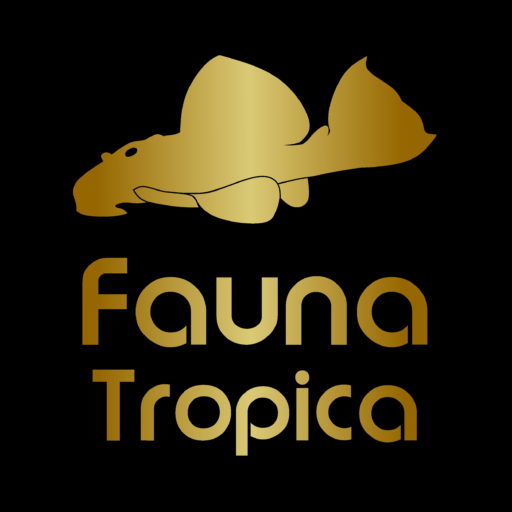Set up of the Parancistrus aurantiacus:
Aquarium:
Dimensions: 100 x 50 x 30cm (divided in the middle with a coral grid), 150 liter
Technology:
Filter: air lifter 20 mm with sponge; HMF
Water movement: current pumps (Tunze), air stones
Lighting: LED spots 7 watt
Heating: immersion heater (Eheim Jäger)
Decoration:
Substrate: quartz sand / quartz gravel
Hiding places: 2 ceramic caves round each (7 - 8 cm diameter, 20 - 25 cm length), slate slabs, rounded pebbles
Animals:
1.1. Parancistrus aurantiacus, 11 - 13 cm length
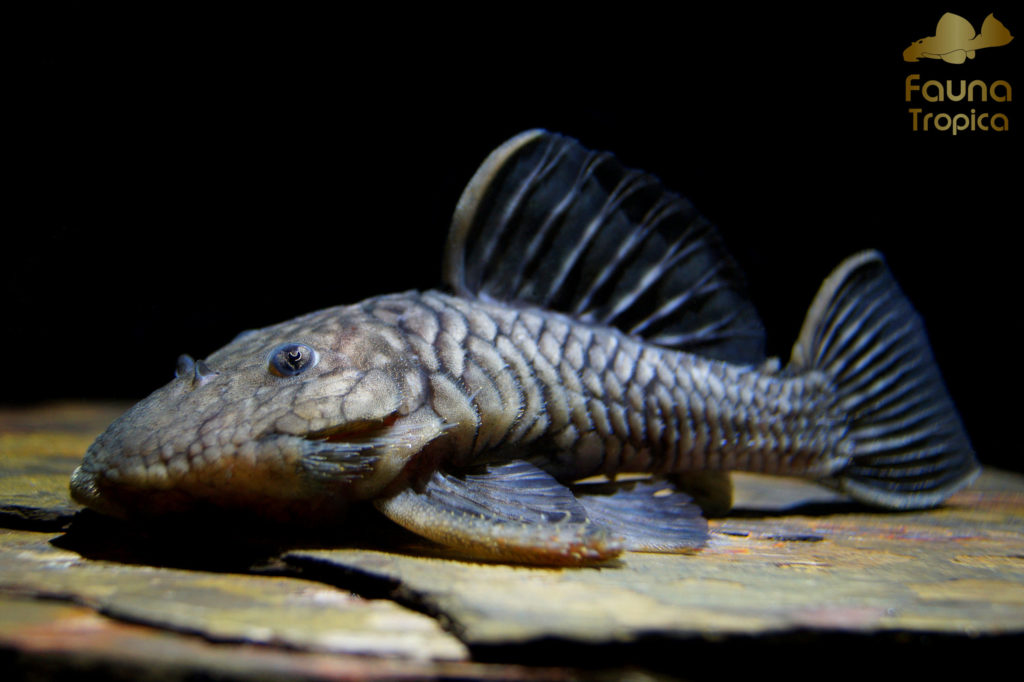
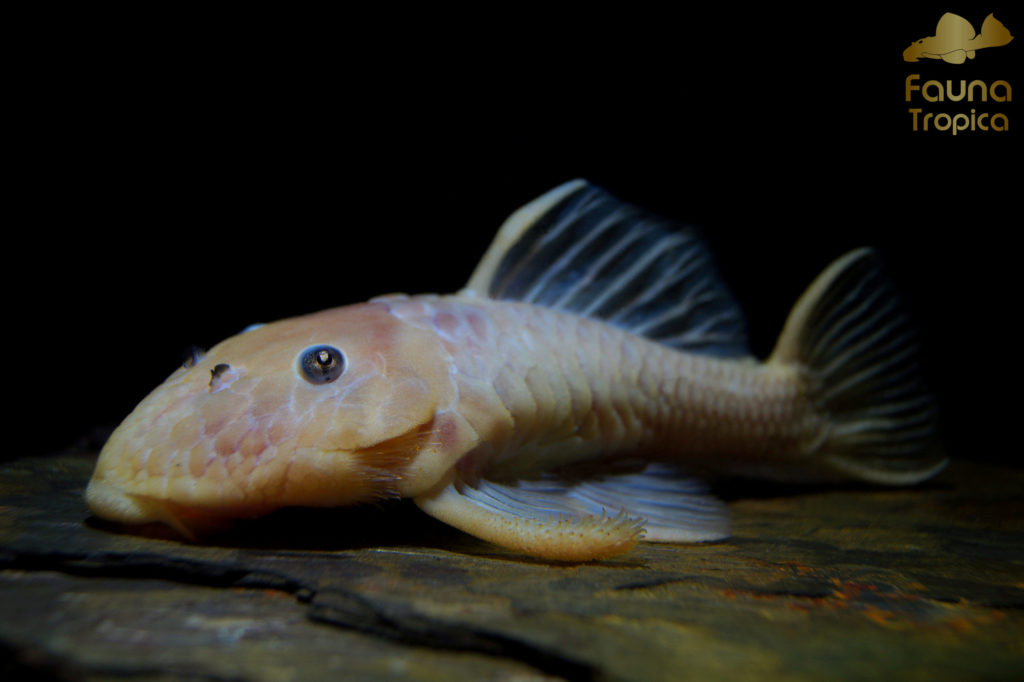
Water parameters (regular):
Conductivity: 450 - 500 mS, temperature: 28 °C, pH: 6.8 - 7, water change: 50 % weekly
Our breeding experience:
After two unsuccessful tries, our Parancistrus aurantiacus pair managed to produce a well developing batch of eggs. The eggs were laid on Saturday 10.04.2021 - Sunday 11.04.2021.
Other than the previous batches, this one didn't turn white after a day and the father took good care of the eggs. Even though some eggs turned white in the course of 6 days, the father managed to pick them out and eat them, before they would spoil the remaining batch. Of course we check everyday when we have a brooding male, so we could see, that it tossed out the eggs / fry on hatching day. Normally we let the father do the job and don't steal the eggs. Especially the first egg batches we normally intent to let with the father, that he can practice and learn how to take care for the eggs and fry.
While separating the eggs into a breeding box, we could observe the larvae in all three stages of hatching. While most of them still were inside of their eggshells, one larvae (on top) was already out and wiggling, while one was busy with fighting its way through the shell (on bottom).
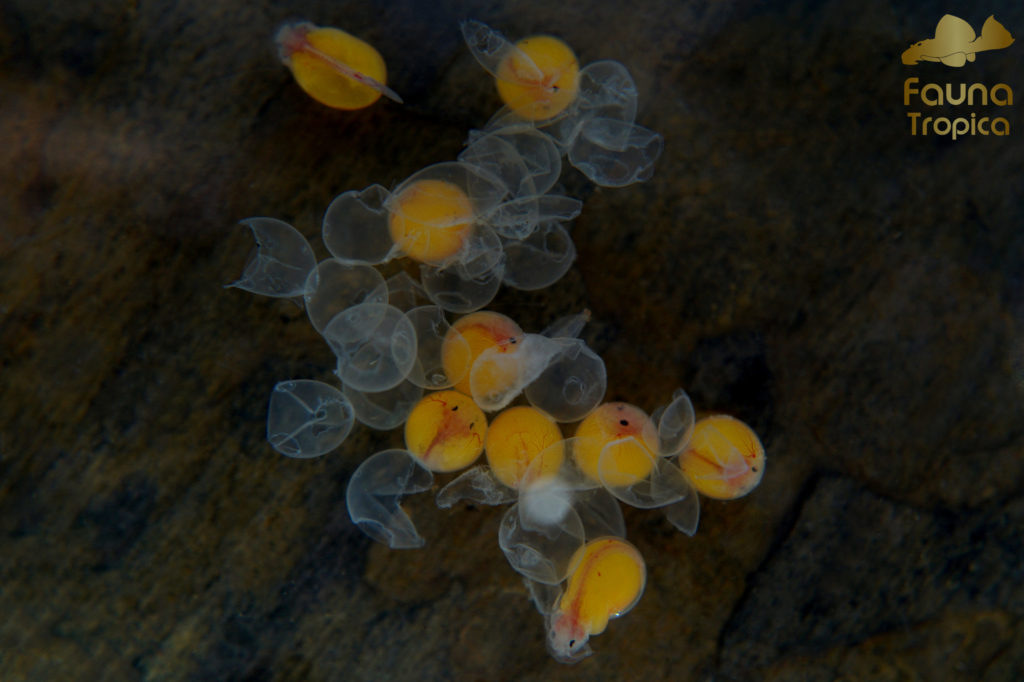
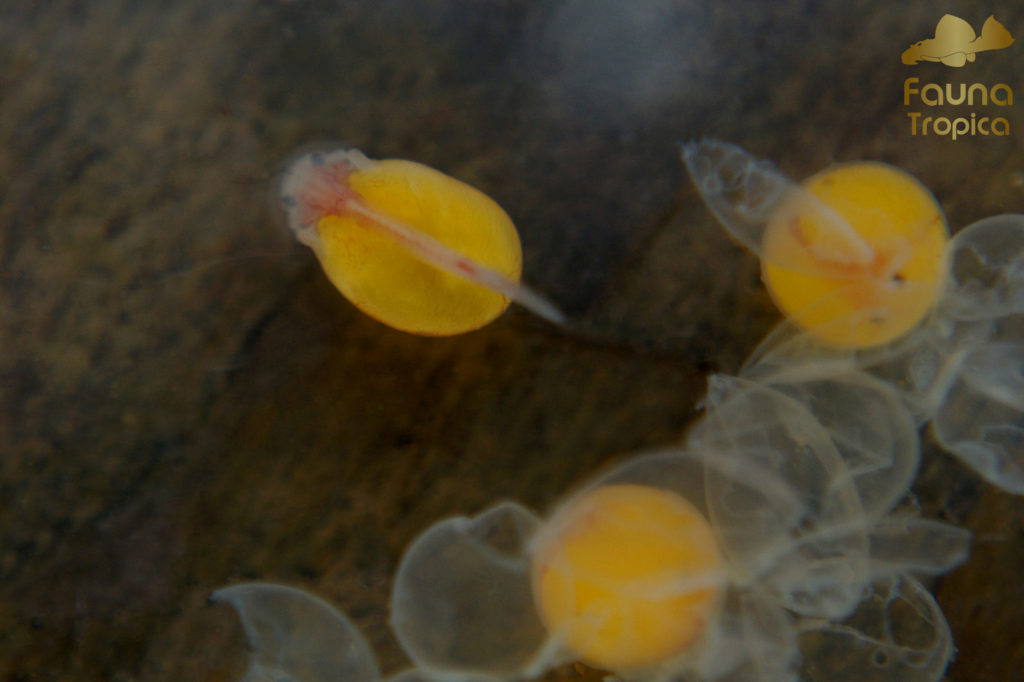
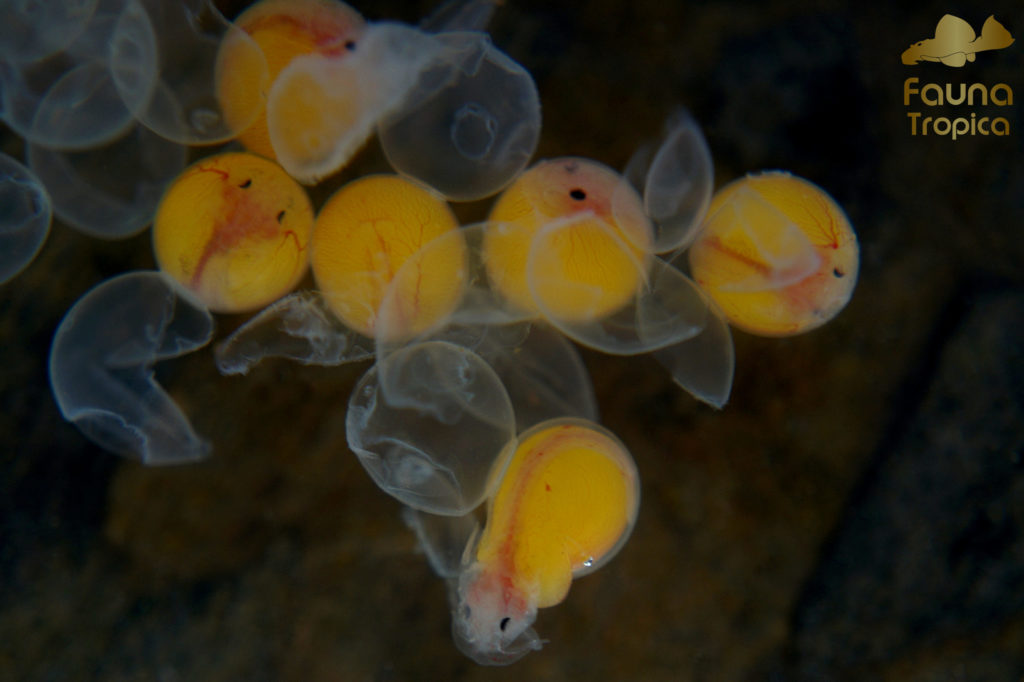
Sometimes it is good to help the little fry out of their eggshells. A procedure, that is normally done by the father. Fry that stay to long in the eggshell, or are half way trough for to long, can get fatal deformities. If the larvae are ready enough, the easiest way for us to do it, is to grip an empty eggshell, attached to the unhatched egg, with tweezers, and shake them softly. This mostly helps to rip the shell far enough, that the wigglers manage their way into freedom. Other than that soft brushes and a sandy underground can be used, to scrape a little bit on the surface of the shell. Egg tumblers do their work also mostly quite good, where the constant moving of water jiggles the eggs hard enough, to simulate the helping behaviour of the father.
Judging by how many empty egg shells were still attached to the batch, it had an original size of around 25 pieces.
Day 1:
After one day the babies show already first pigmentation. The mouth of the babies is a lot bigger than with most other pleco-babies. The egg sac is still quite full and not much smaller than when they came out of the egg. It is more oval than before. One larvae seemed to have a damaged yolk sac and sadly it ran out and caused the death of the baby. Two other ones seem to be a bit behind in development, we will see how they will do in comparison to the others. In total we had 10 babies, 9 are left now.
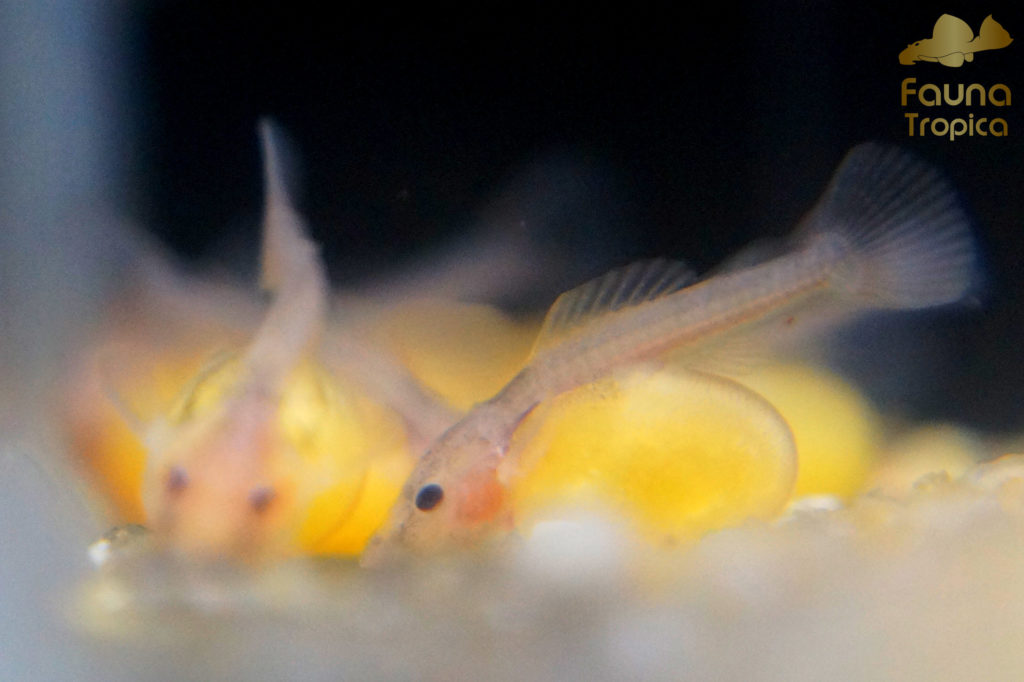
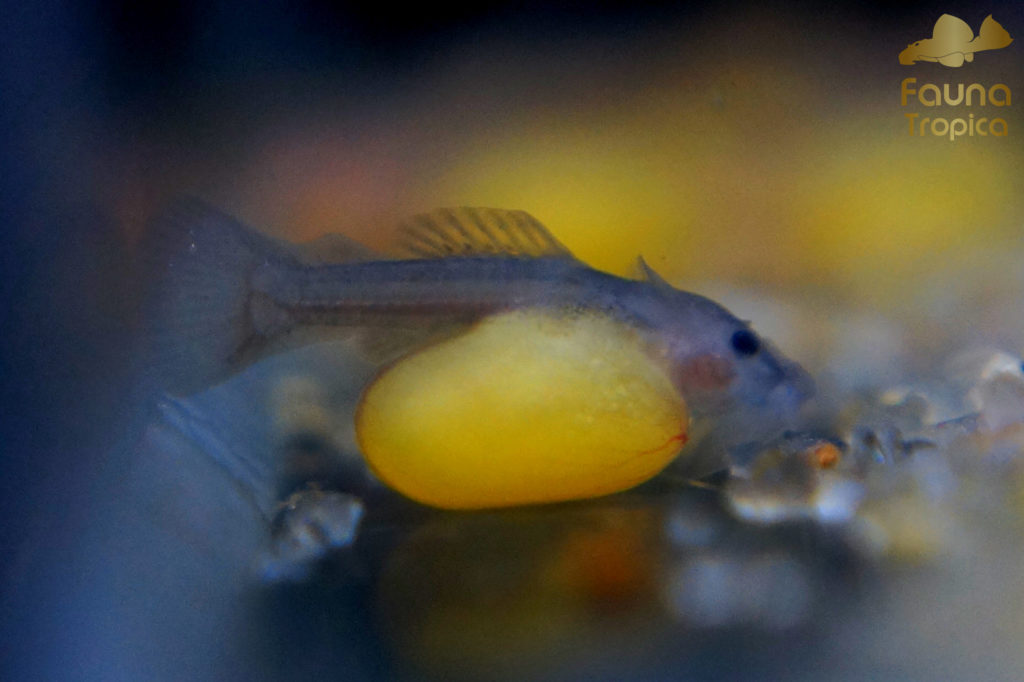
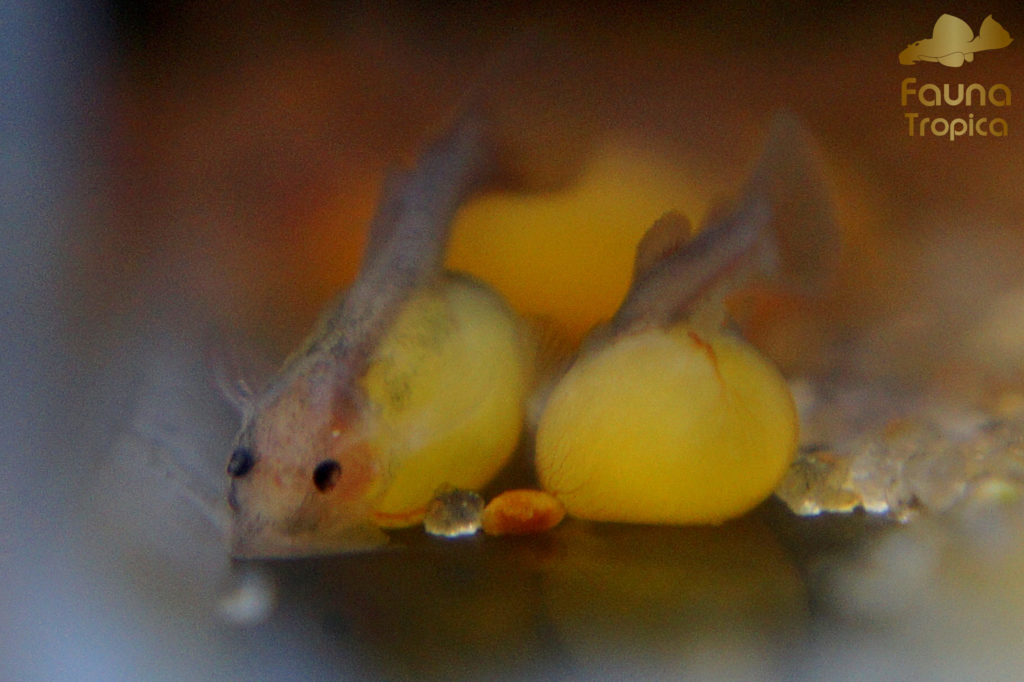
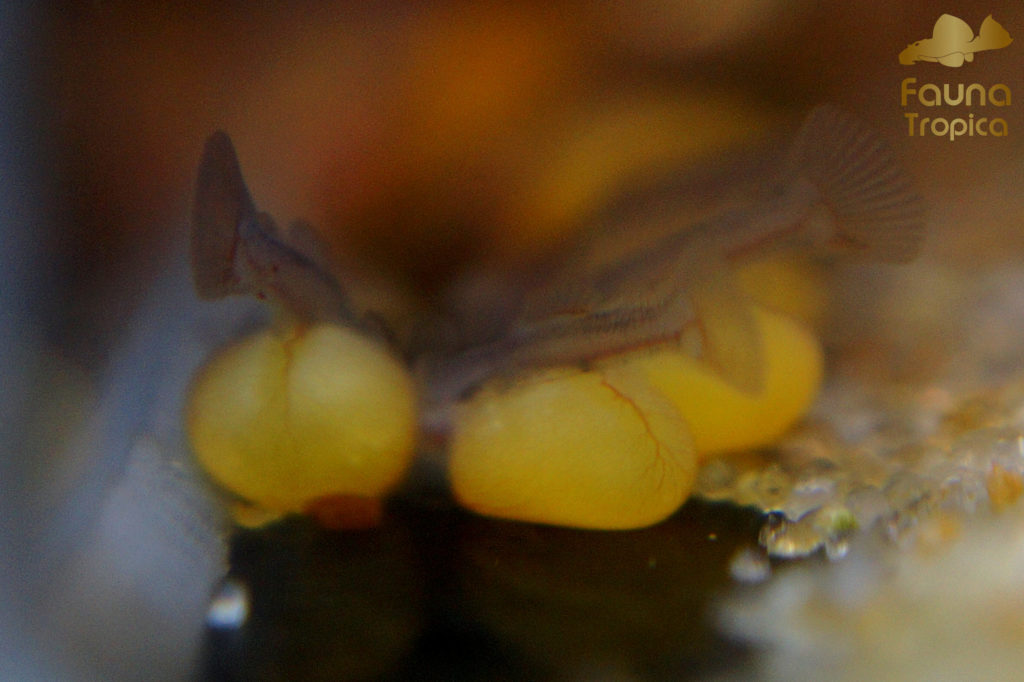
Day 2:
On day two the larvae are doing really good. They are really active, but try to avoid light, that's why we don't light the aquarium. Even though we offered them a small piece of ceramic to hide they don't use it so far. They get more and more dark pigmentation. The egg sac is still really big.
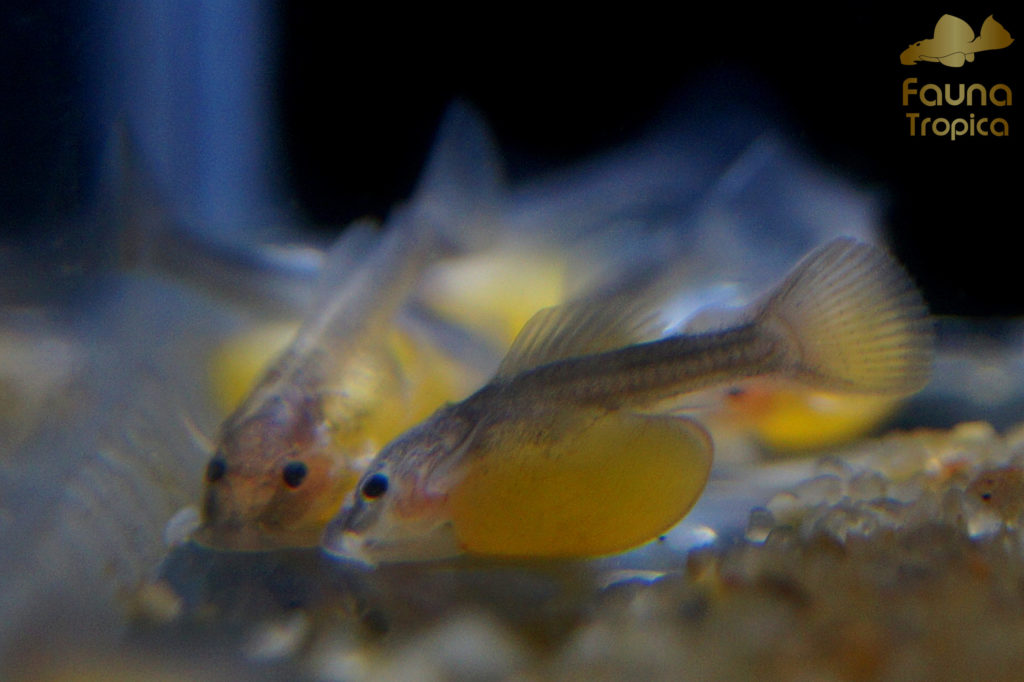
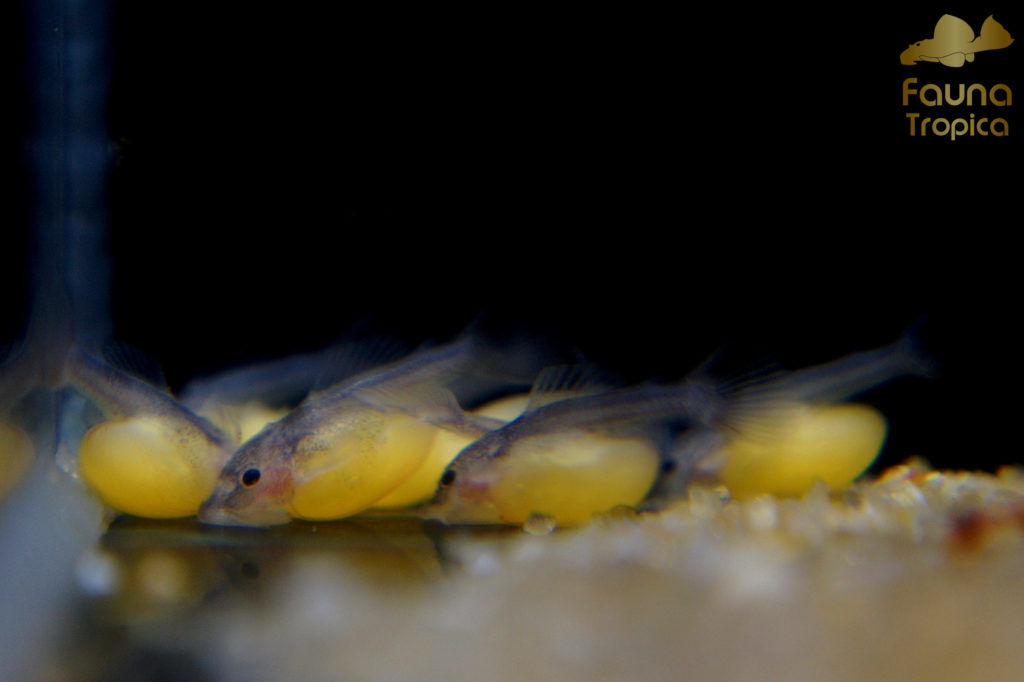
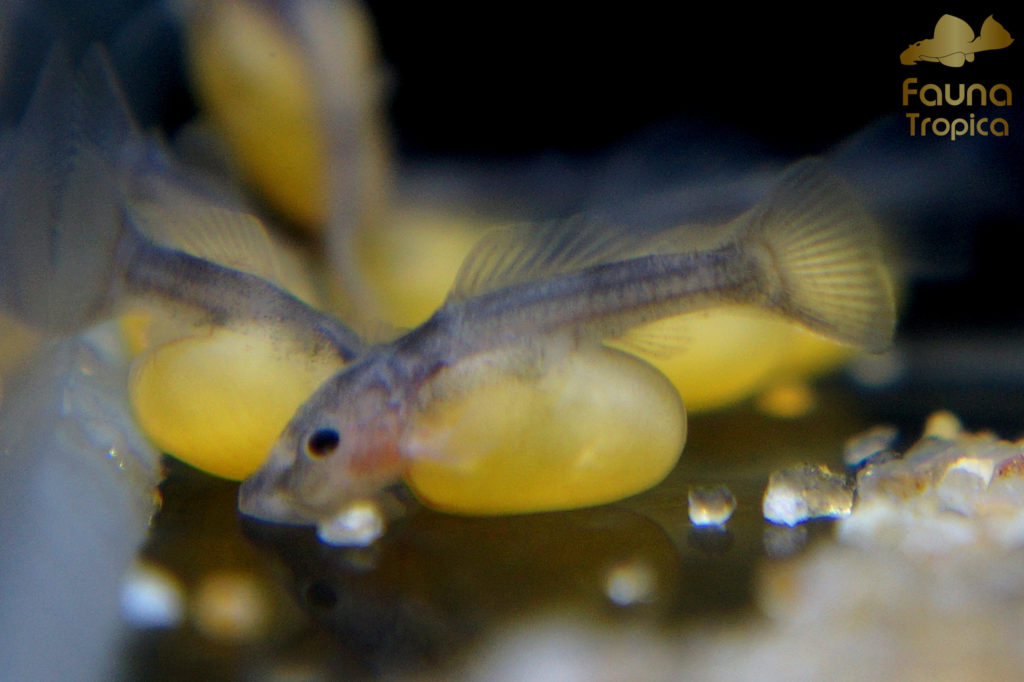
Day 3:
Day three is not much different then day two. They are still wiggling active and are good looking. The fry are growing. The yolk sac is a little smaller but still comparably big.
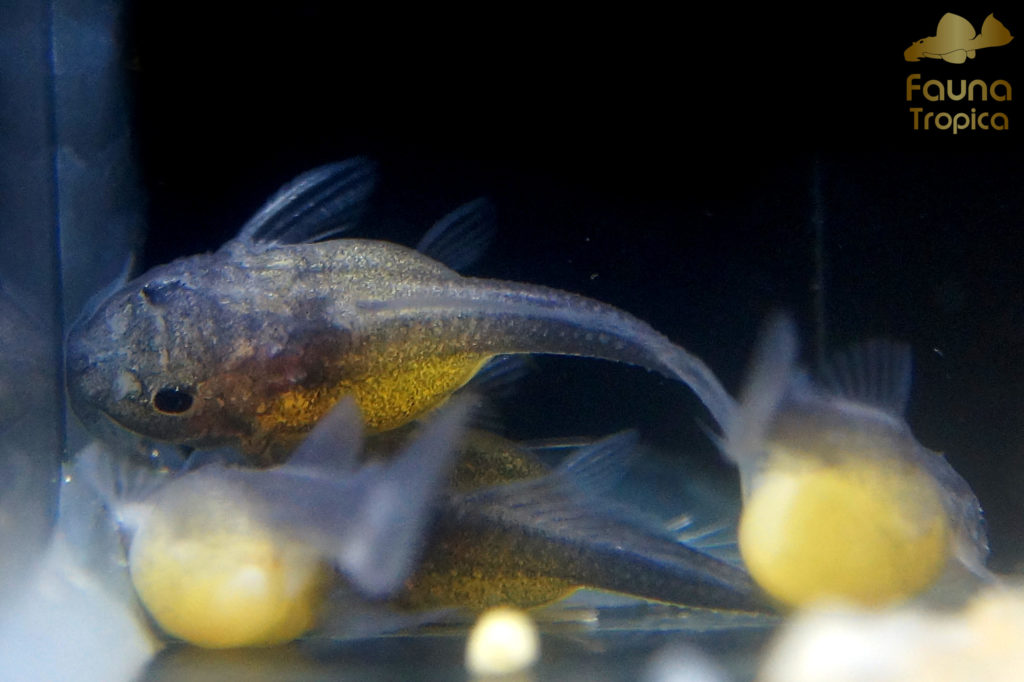
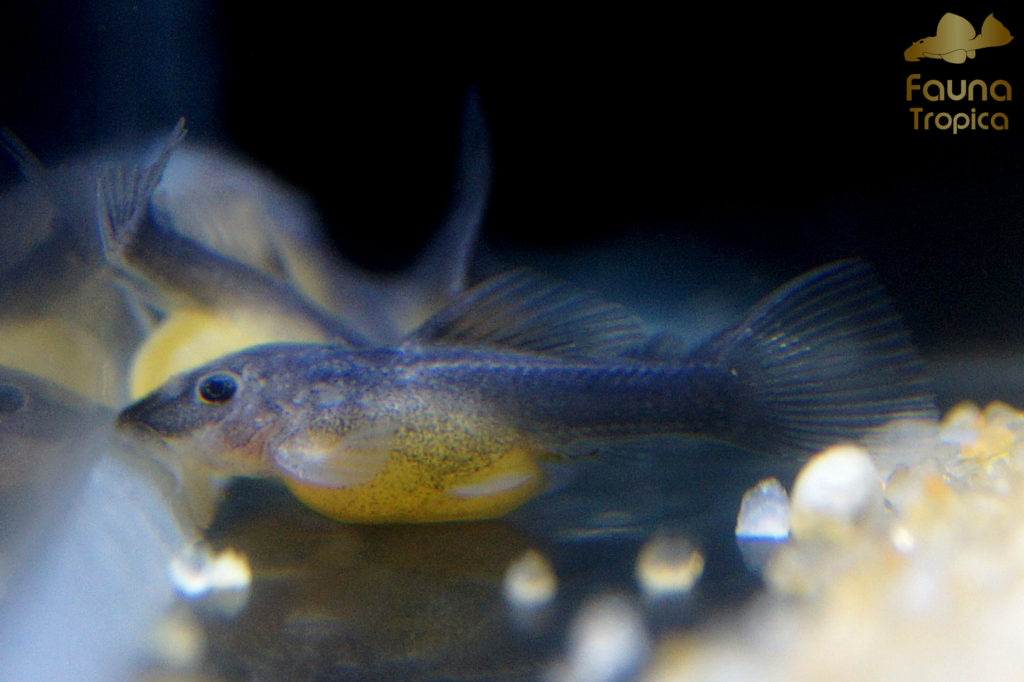
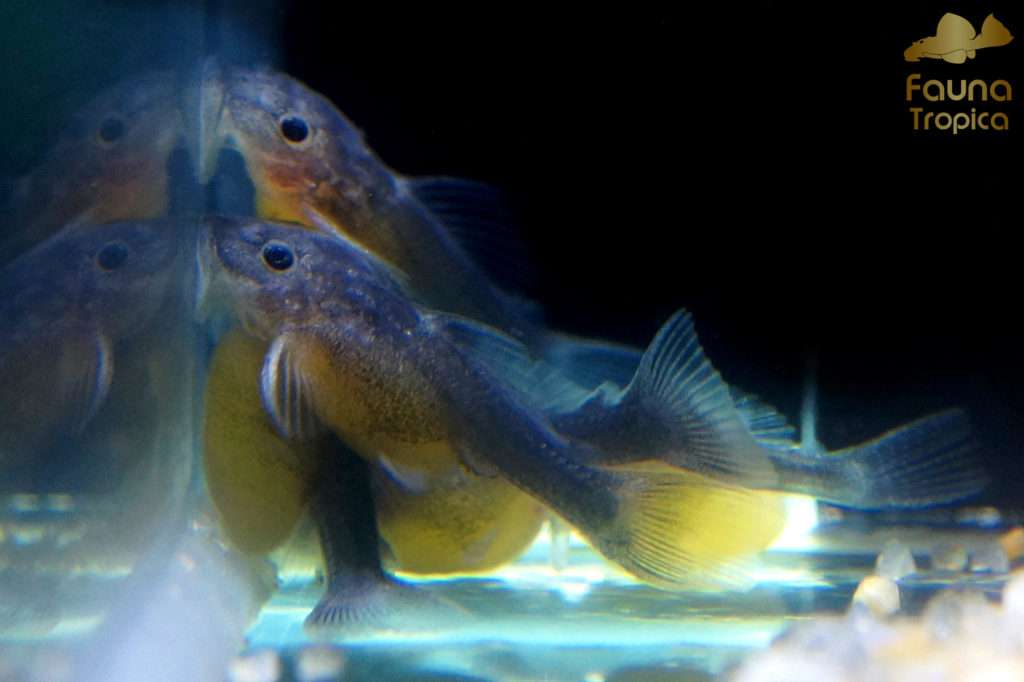
Day 4:
On day four the youngsters get more and more dark, almost black. Also there is now a small difference notable in the egg sac. It is getting smaller and you can see the fry pooping.
Day 5:
On day five the youngster are totally black and are again bigger than on the days before. Also the yolk sac is almost gone. They are still really active and looking good. Only two fry have still a really big yolk sac which is more pointy than the other youngsters had before. We hope they will make it.
Today we also put a small walnut leave into the breeding box, so that they can eat from it. We didn't feed so far.
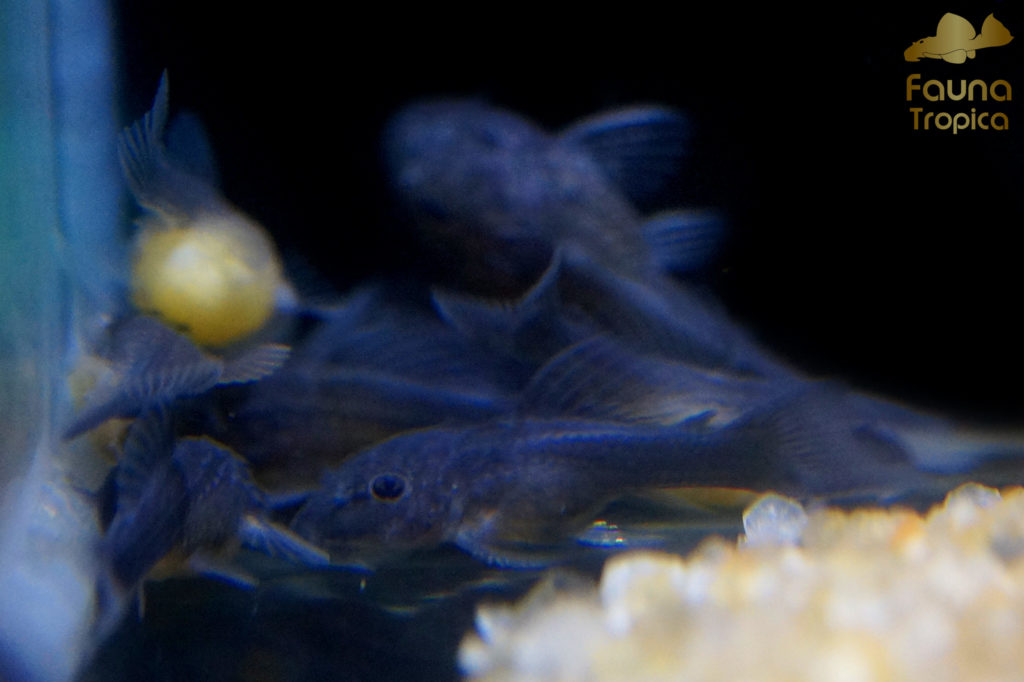
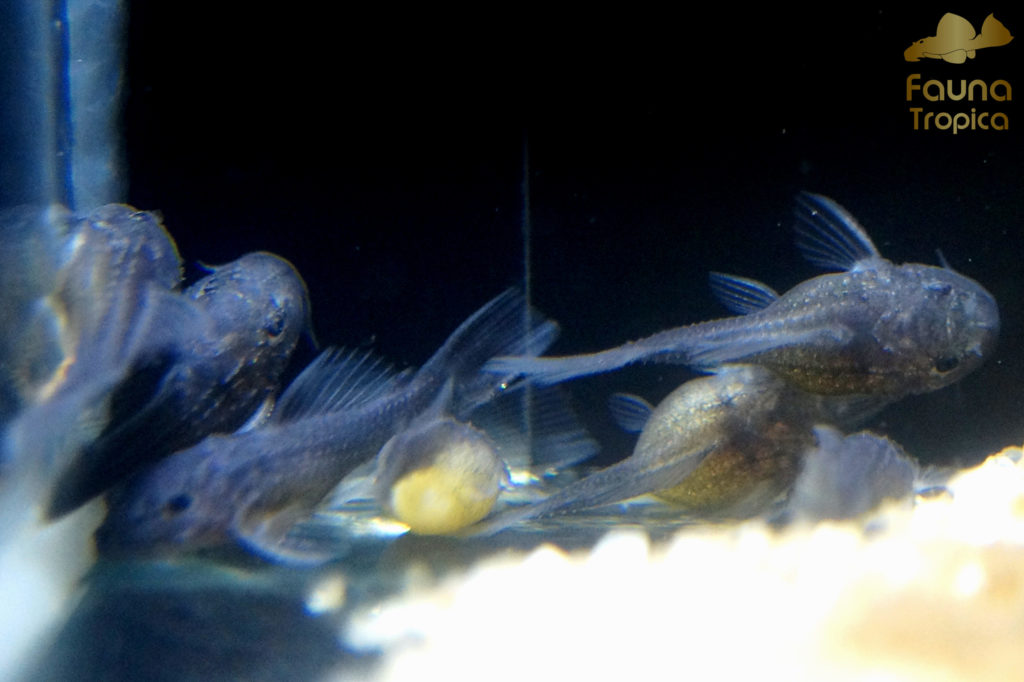
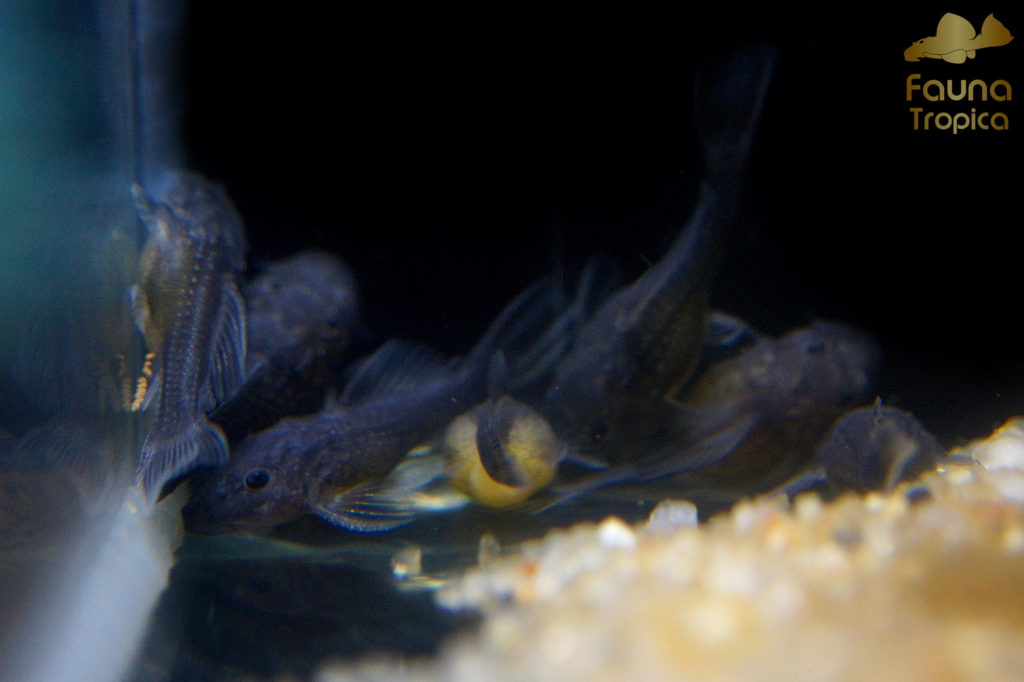
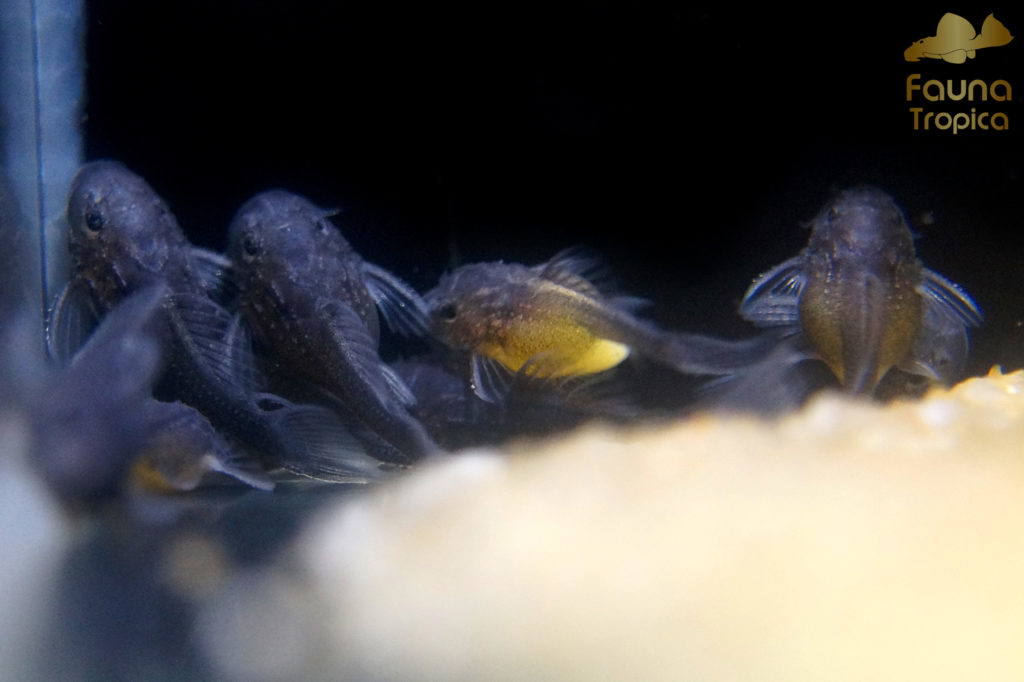
Day 7:
On Day 7 / Week 1 we started to feed the fry industrial food, since the yolk sac of the "normal" developing ones seem to be used up. Since we know that this species can react sensitive to protein rich food in young age, we try to feed more light and plant based food, which shouldn't cause bloating. Our first try with Plankton soft granulate seem to work perfect and the fry are active taking it in.
Day 8:
On Day 8 the youngsters are doing good and ate up all the food. New food was put into the breeding box. The babies prefer to sit in the shadow under the walnut leaf. The two slower developing fry are still active and also seem to develop. The yolk sac of one is still rather large, but not filled much anymore. We will see how they will do.
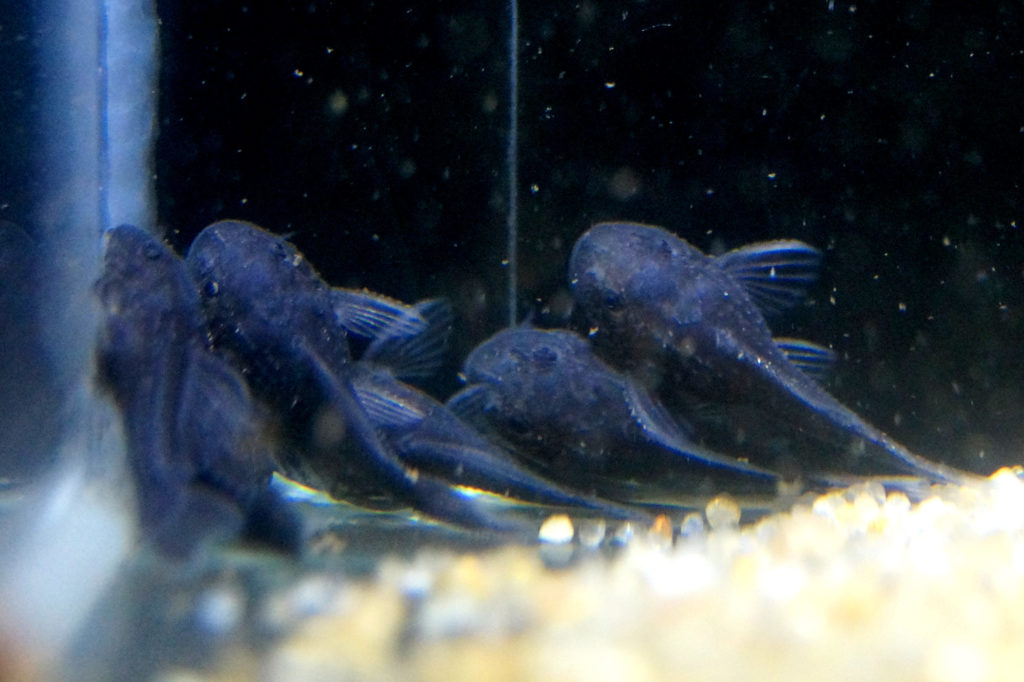
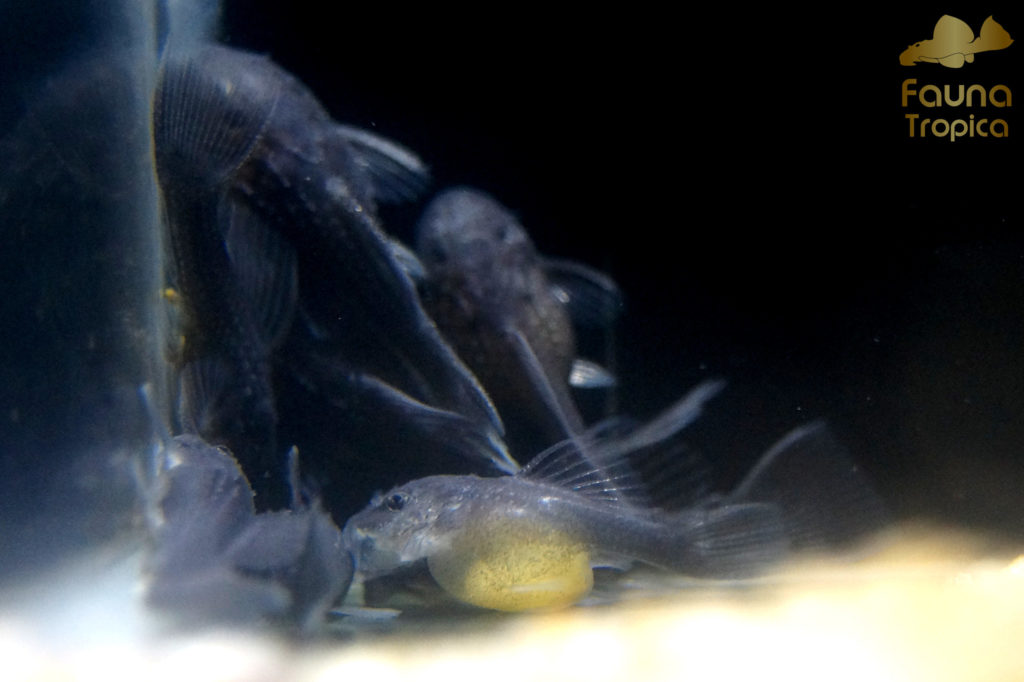
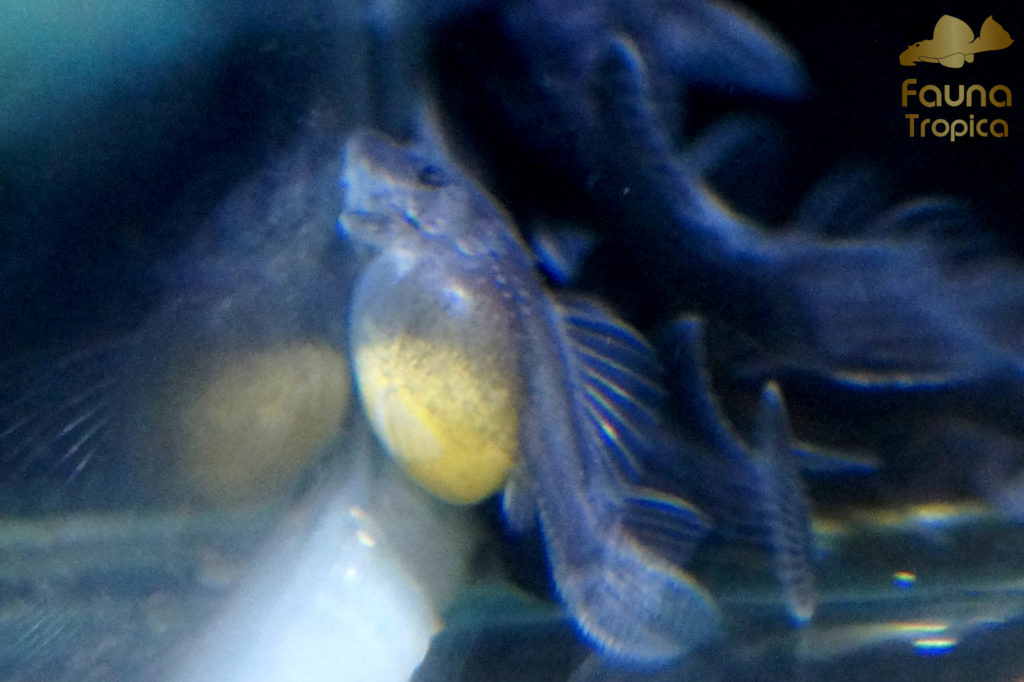
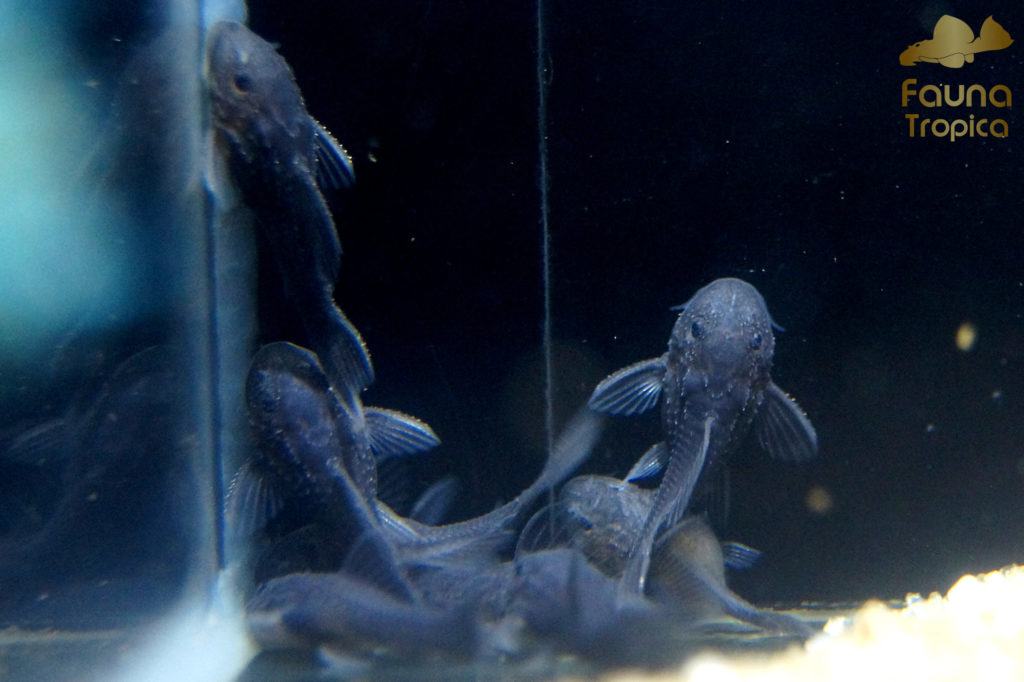
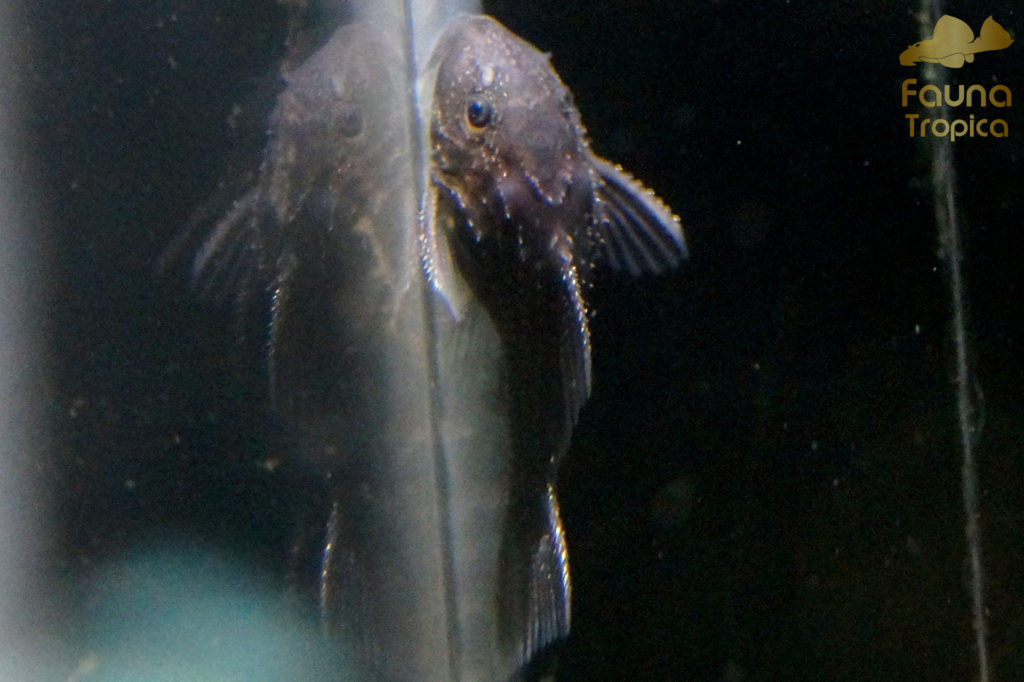
Day 9 - 11:
In day 9 - 11 the babies didn't make much changes in appearance. In that time frame also the fry with the big, half filled yolk sack died. The other one, which has now only a really small yolk sac, looks good only is smaller in size, compared to its normal developing siblings. The food is still taken good and also the walnut leave seems to get eaten. Not eaten food and dirt gets sucked of on the end of the day. The parents in the same tank started to tunnel again on the 21.04.2021. The female seems rather fat again and we hope for another egg batch. The parents don't seem to be disturbed by the cleaning and photographing work every day.
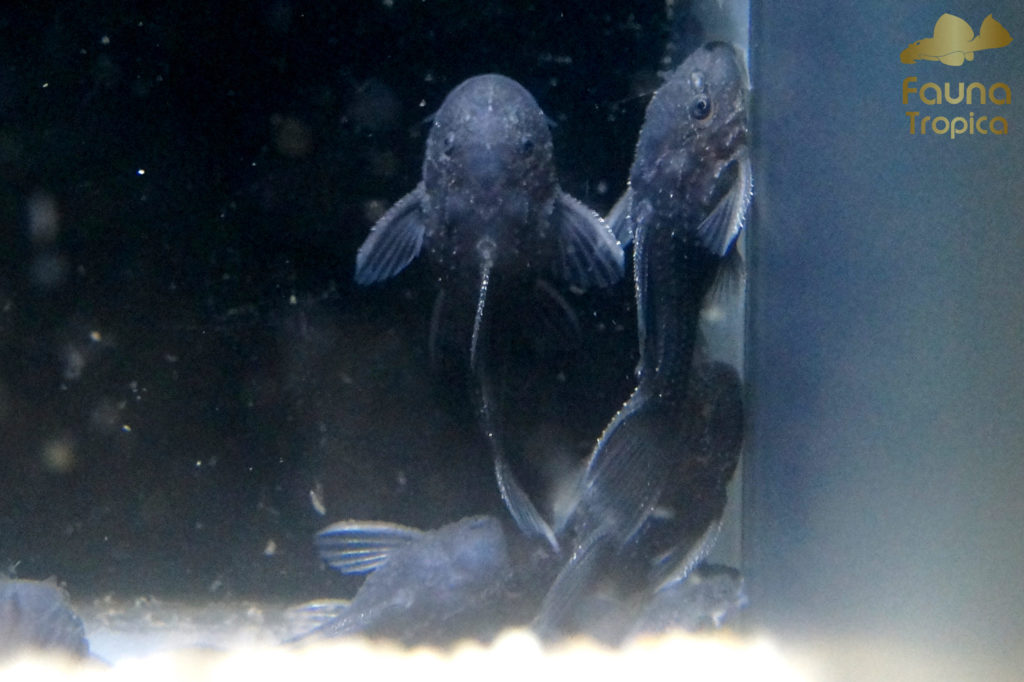
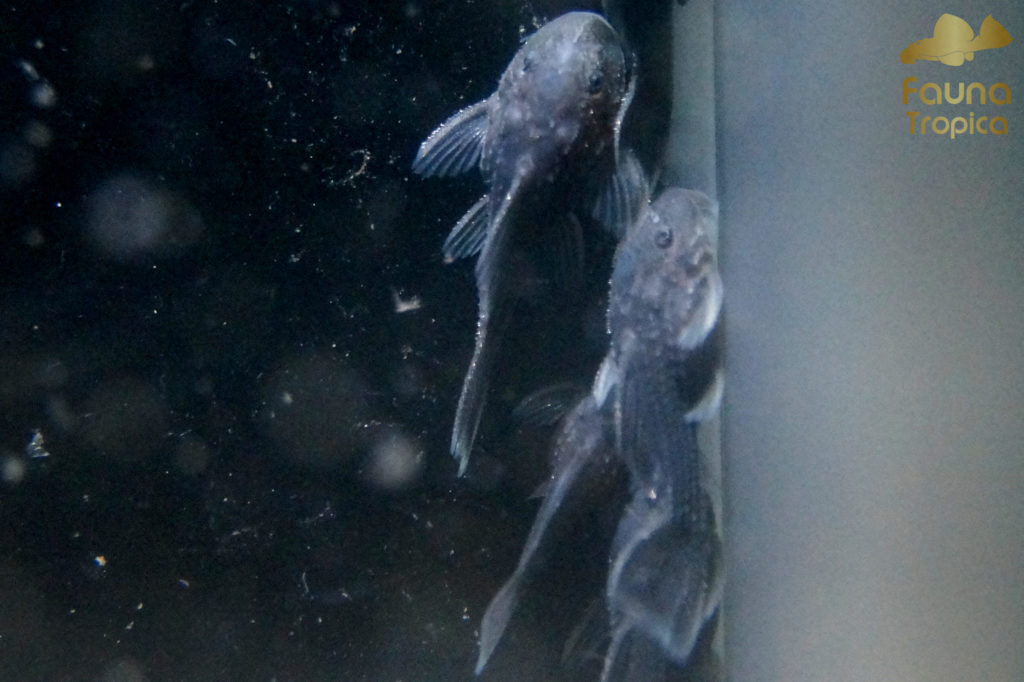
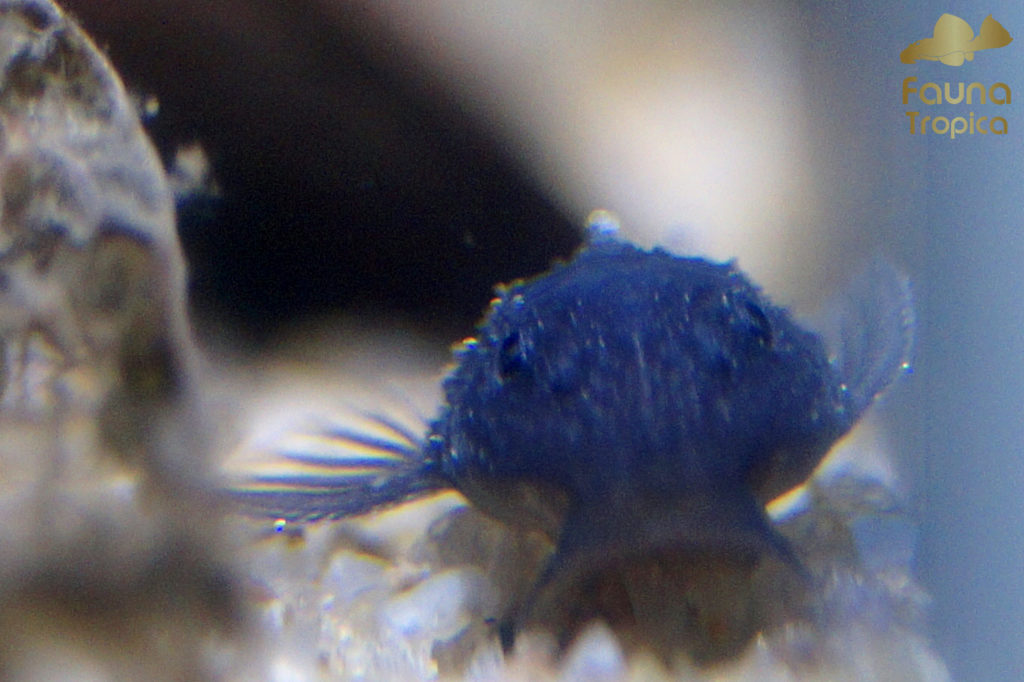
Day 14:
On Day 14 / Week 2 the first waterchange with tap water has been done. We took care to fill the tank with water the same temperature as in the tank.
Day 15:
On day 15 the one smaller, not so fast developing baby died. The other ones seem to do just fine. Another catappa leaf has been added, to provide for food in between the feeding with granules.
Day 16:
On day 16 the remaining babies are all doing fine and are already quite fast swimmers (avoiding the light while photographing). The food is now mostly eaten up over the day, so that it is not necessary to suck off food remains on the end of the day anymore.
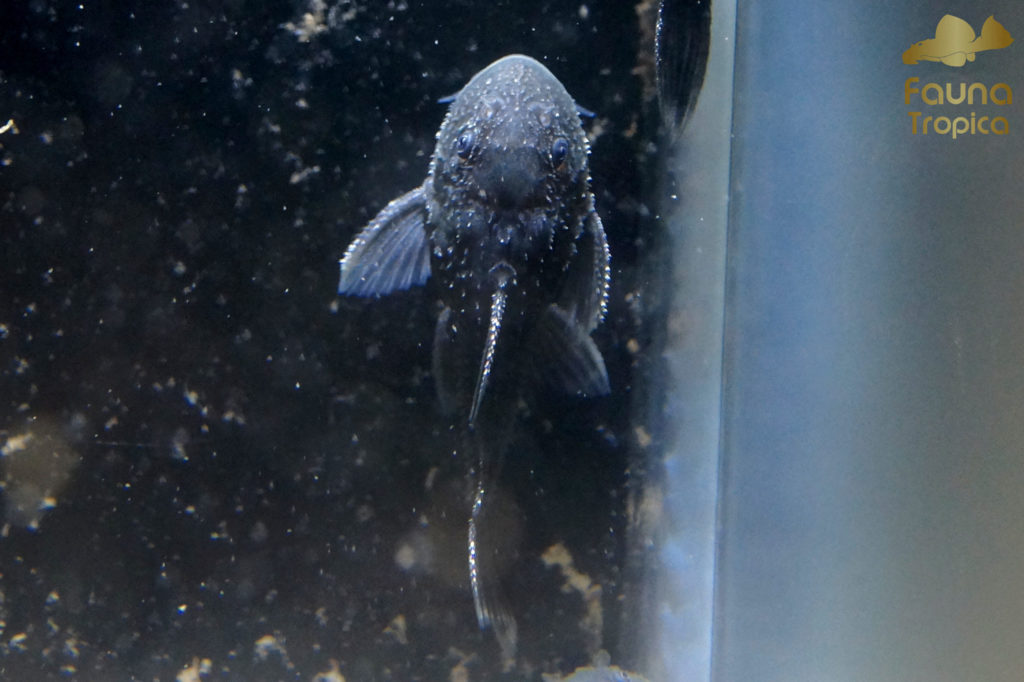
Day 17 - 18:
Between day 17 and 18 sadly one of the babies disappeared, probably through the hole where the airlift goes through. The adult fish in the tank seemed to kick the airlift from the breeding box. The airlift has now been attached to the breeding box with a rubber band for a better hold to it.
Day 19:
On day 19 the fry start to develop a dotted pattern.
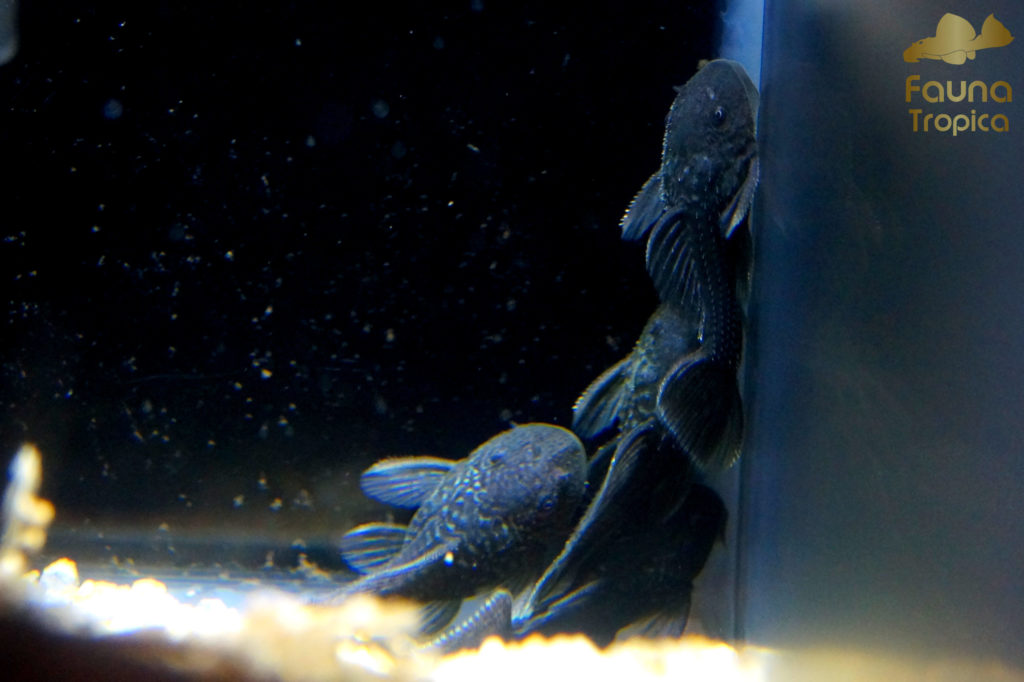
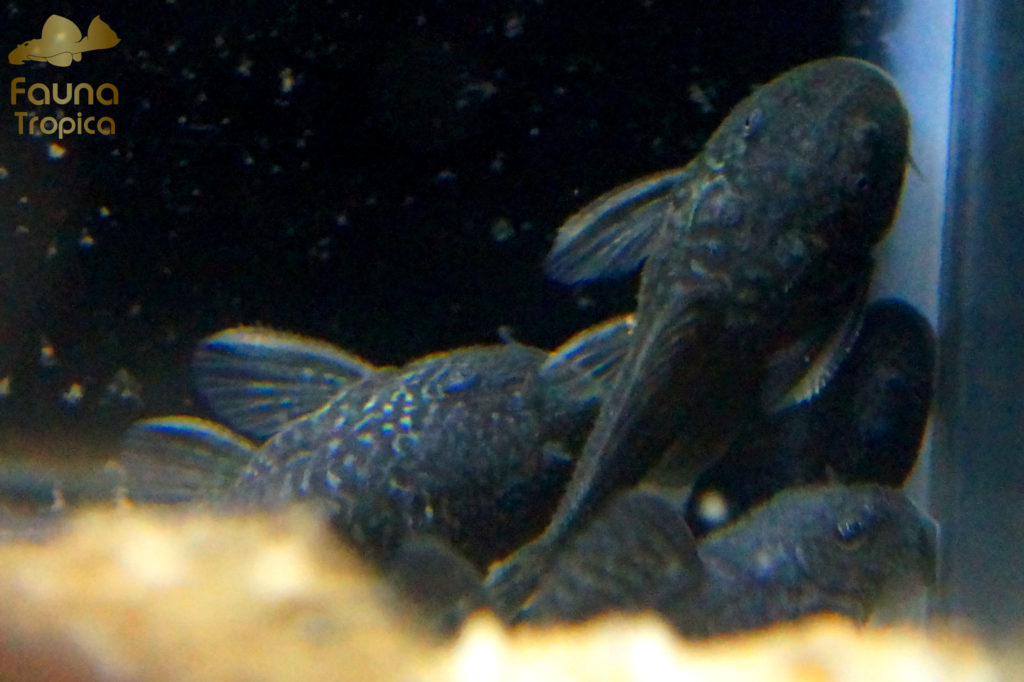
Till day 38, all of the fry are developing well. In the meantime the breeding pair spawned again, and 4 youngsters of a new batch are together with the older siblings in the breeding box. The appearance didn't change so far, only that they grew a little bit. The yellow dots are only a bit more pronounced.
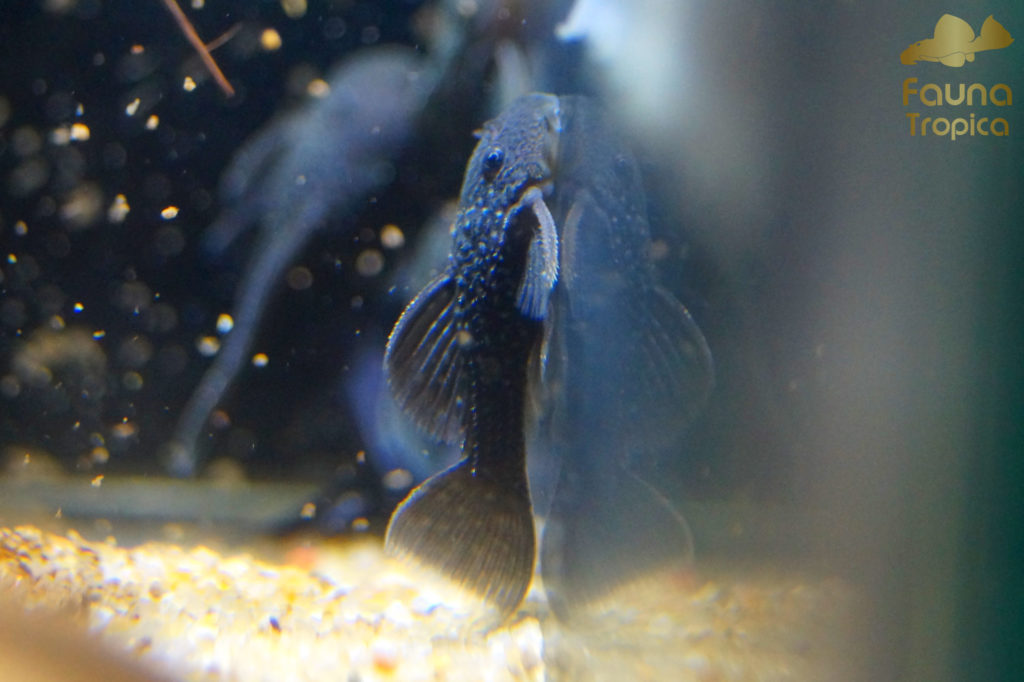
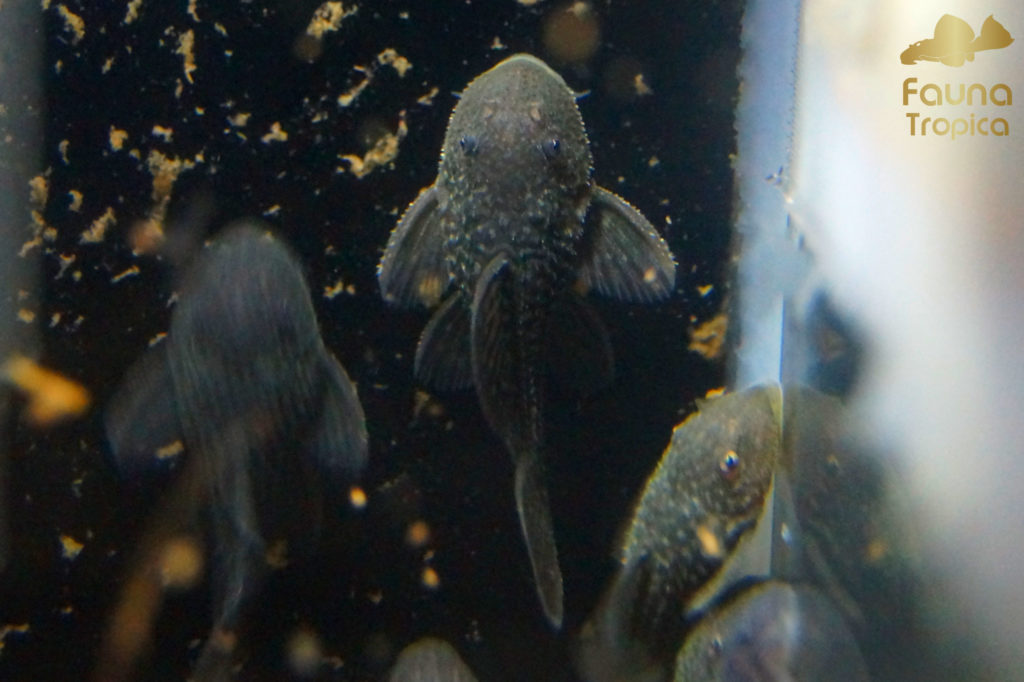
Day 47:
On day 47 we could spot the first youngster changing its color. In comparison to the other ones, it shows now a pinkish-white coloration. Most of the fins still show a black coloration. This fish is one of the bigger ones in the batch, measuring around 2,8 - 2,9 cm total length.
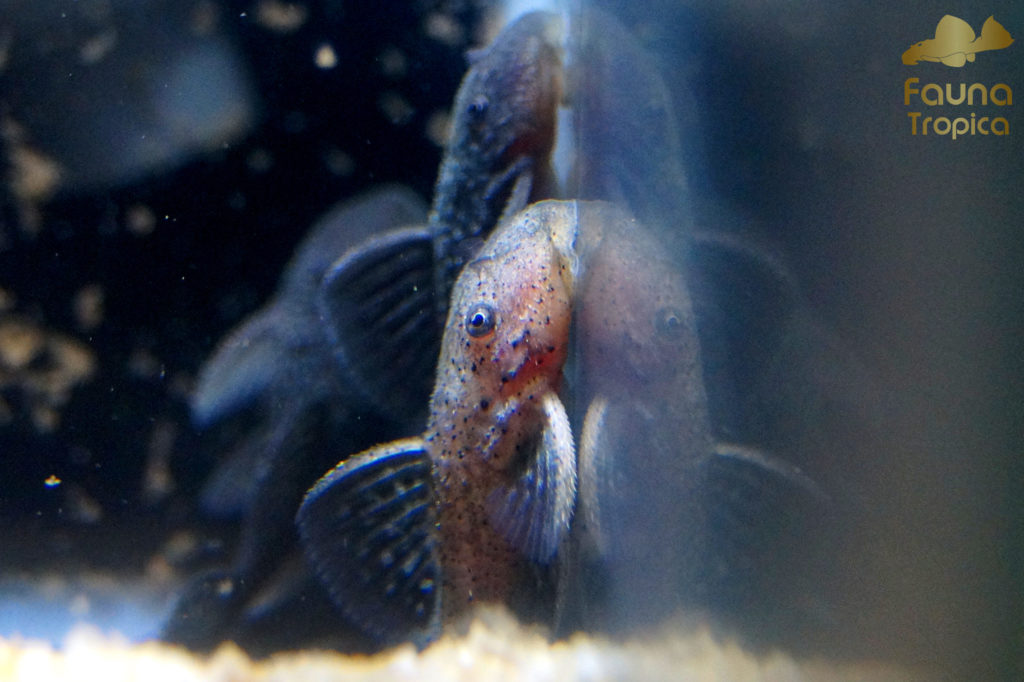
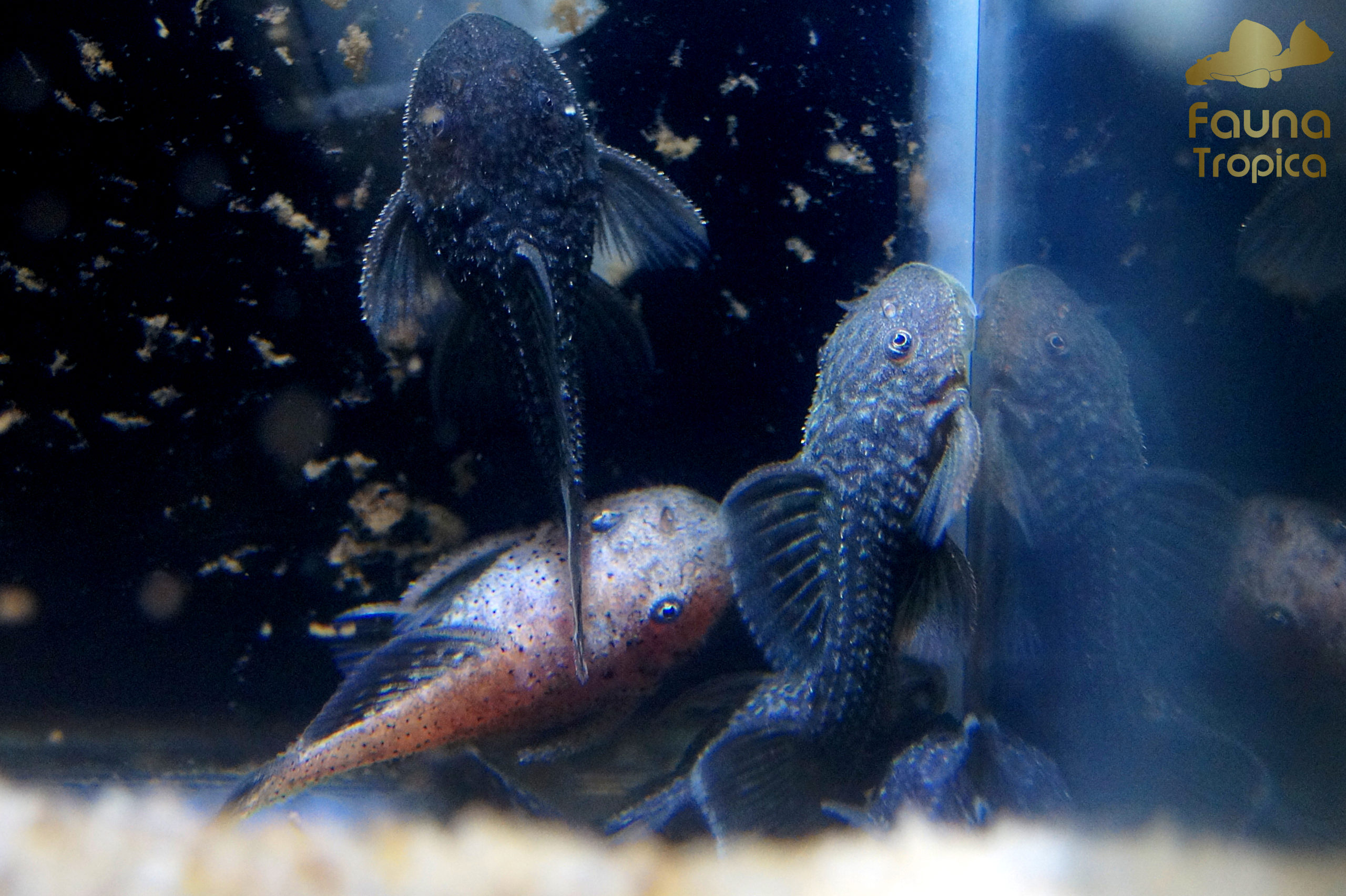
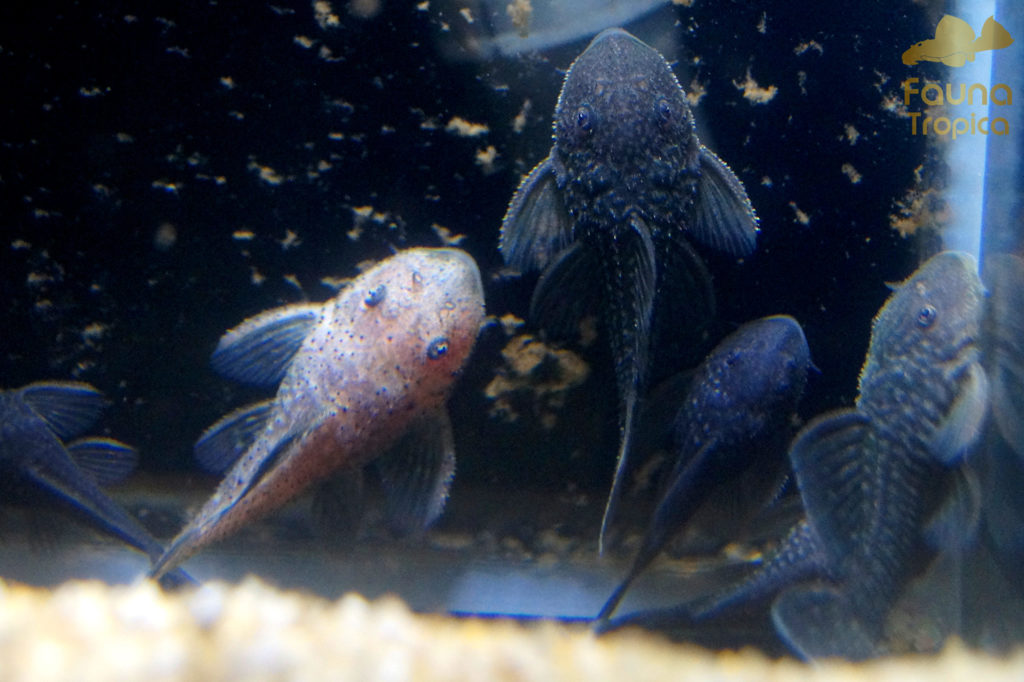
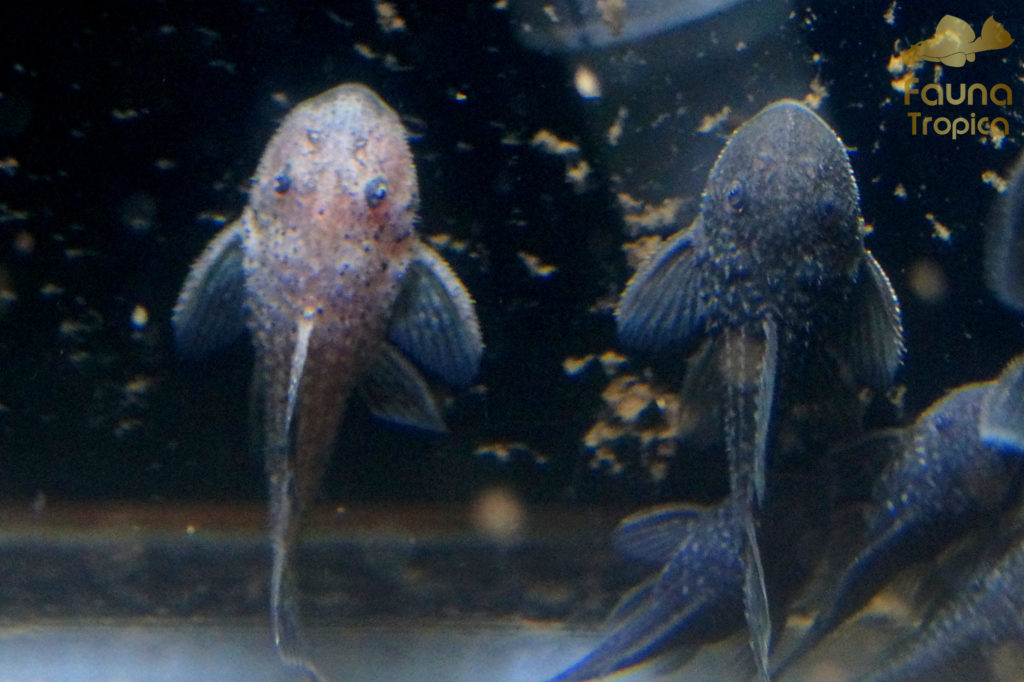
The parents in the same tank started to tunnel again and on 30.06.2021 they had a new egg batch. The batch was bigger than the times before. Because the male started to eat the eggs when they were hatching we catched them out and put them in a Floating ring with air lifter. There are at the moment 10 babies and they are doing really good!
